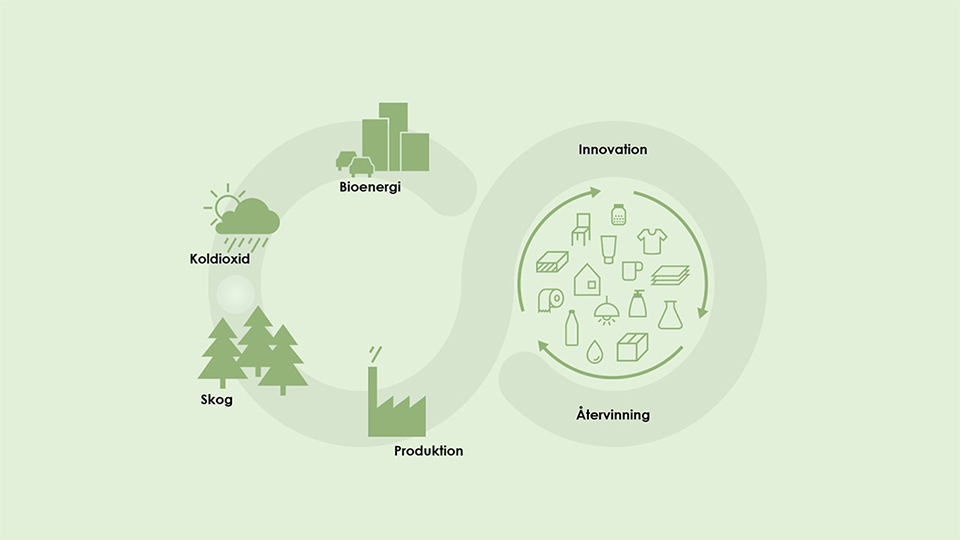
How does the forest's green carbon cycle work?
The forest's green carbon cycle is fundamental to life on Earth. How does this carbon cycle work, and where do forest products fit in

Forests around the world have different owners, ranging from states to private parties. How does the form of ownership affect how the forest is managed and what it is used for? Experts Safia Aggarwal and Anna Treschow express their views on the matter.
According to the UN Food and Agriculture Organisation's (FAO's) Global Forest Resources Assessment 2015, the state owns all forests in Central Asia and Russia, and 99% in Africa. In Canada 93% of the forests are owned by the state. In contrast, private forest owners are more common in Europe, where 56% of the forests are privately owned, followed by the Asia-Pacific regions with 33% and the US with 32% of forest owners being private. In Sweden, 75% of the forest is owned by private parties. Of these, 50% consist of 320,000 private individuals and 25% of privately owned companies.
According to Anna Treschow, legal policy expert at the Federation of Swedish Family Forest Owners and Professor at the Department of Property Law at Lund Technical High School, many of the world's researchers agree that private ownership is important when it comes to managing land in a sustainable way:
"In general, researchers use to say that privately owned things are higher valued than common owned things. A good standard of living and strong rule of law mean that what is owned is managed with a more sustainable, long-term approach. Poverty, weak rule of law and weak property rights with poor enforcement more often lead to short-termism and environmental degradation."
Safia Aggarwal, Forestry Officer at the FAO and Doctor in Geography at the University of Hawaii and the East-West Center in Honolulu, Hawaii, USA, believes that legal land and tree tenure rights are necessary, but that these are not sufficient to promote sustainable forest management or influence forest production:
"In addition to legal tenure to land and trees, appropriate policies and laws are also needed that stimulate sustainable forestry by ensuring that forest owners benefit from adopting such practices. Furthermore, institutions should provide necessary support to forest owners."
She points out that the few countries that have provided such support to forest owners have seen very rapid growth in smallholder forestry, contributing significantly to the domestic supply of forest products.
Is it possible, then, to say something regarding how forest ownership affects how the forest is used and what it is used for?
"Where land and tree tenure rights are uncertain, the forest will probably not be reforested or managed properly. On the other hand, if the rights are secure, the forest is more likely to be reforested and well managed. For this to happen, it is also important for the owners to really benefit from investments made in good forest management," says Aggarwal.
She notes that in many countries policies and laws across sectors serve to disincentivise tree planting on private land. For example comprehensive forest management plans that are too expensive to produce, or all kinds of permits for harvesting, transport and sale, may be required. Likewise high taxes or multiple taxation along the value chain can render production of wood and other forest products financially unviable. It is therefore necessary to review policies, laws and other obstacles preventing landowners from truly benefiting from planting trees or manage forests.
In the specific case of Sweden, the huge number of private forest owners contribute to a multifaceted forest landscape. According to Treschow:
"All of Sweden's individual forest owners are different and operate in slightly different ways. The land is therefore used in a variety of ways, which creates a large diversity of forests at varying degrees of development, something that also favours biodiversity."
The importance of forests varies from country to country. In certain countries forestry is part of a long tradition, as in the Nordics, while in other places this is lacking altogether.
"Sweden is a 'forest nation', with many private forest owners, long tradition of forestry, rural industries and sawmills. The forest is deeply rooted in our culture. It is a culture to safeguard and promote, but unfortunately a lot of today's urban population doesn't understand that. They think that we're destroying the forests, when in fact we've been managing them for generations. This is why the forests re is like they are today," says Treschow.
Storgatan 19
Stockholm
Box 55525, 102 04 Stockholm, Sweden
+46 (0)8-762 72 60
We use cookies to improve your browsing experience (Swedish text)
Privacy policy (Swedish text)